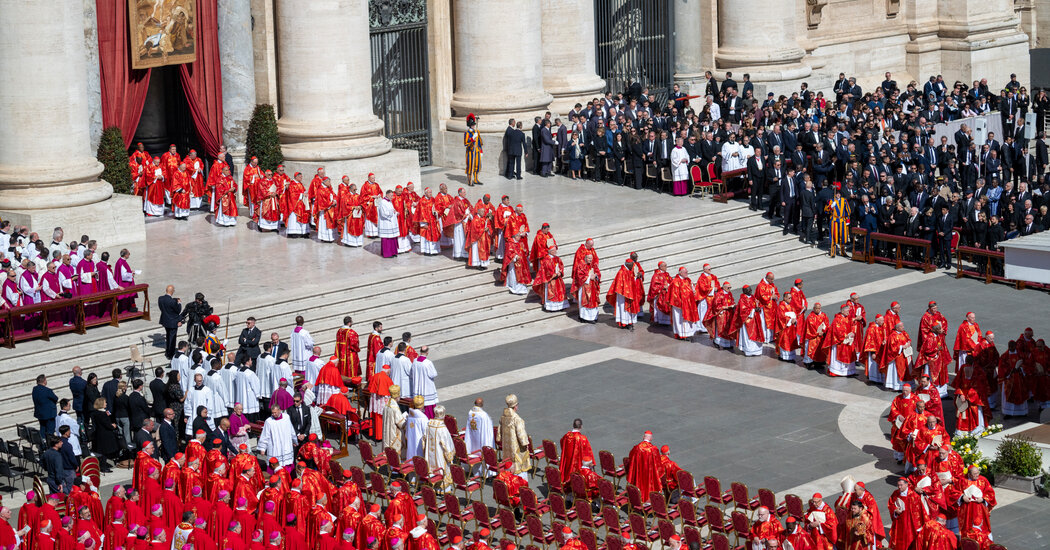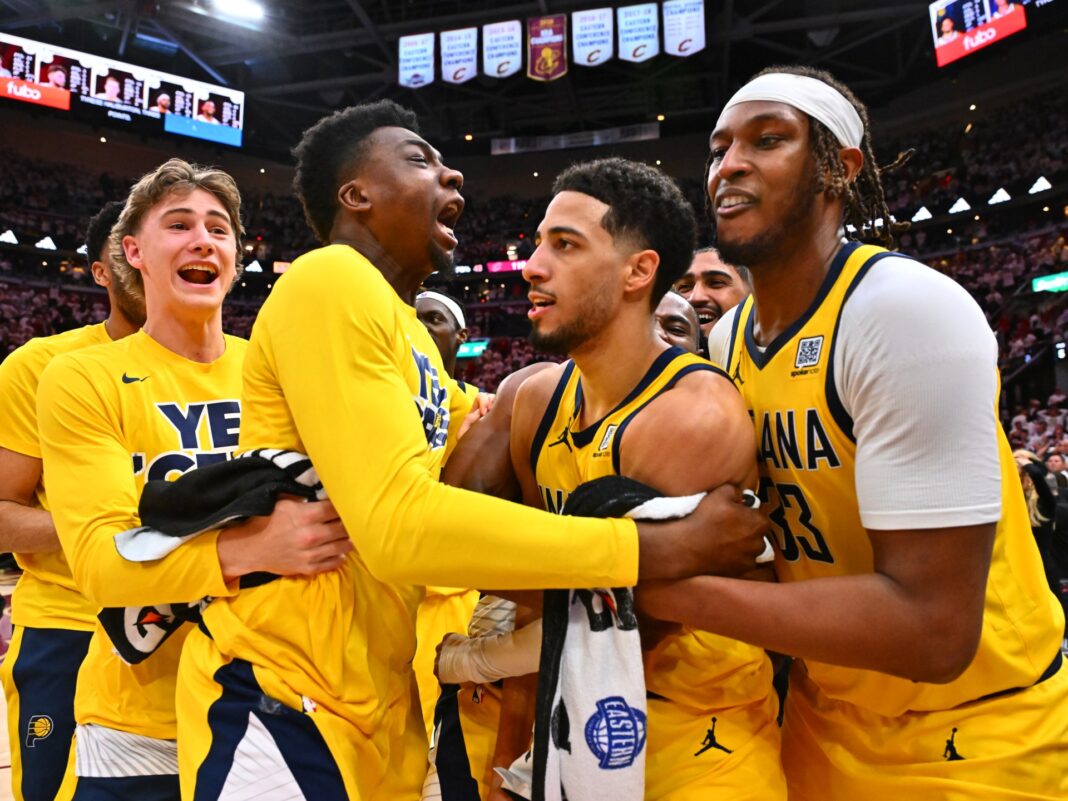Times Insider explains who we are and what we do and delivers behind-the-scenes insights into how our journalism comes together.
Beginning Wednesday, the doors of the Sistine Chapel in Vatican City will close for the conclave, the secretive process of choosing a new pope who will succeed Pope Francis, who died last month at age 88.
One hundred thirty-three cardinals from around the world will lock themselves for hours inside the walls of the chapel, with its Michelangelo frescoes, until one cardinal receives a two-thirds majority.
“It has pure politics, with backstabbing, and throwing people under the bus, and putting up fake candidates,” said Jason Horowitz, the Rome bureau chief for The New York Times, who reported on the papal conclaves in 2005 and 2013. “All the drama involved in that is fascinating.”
The cardinals may vote by secret ballot up to four times per day, with a cloud of either black or white smoke billowing from a chimney atop the chapel roof after each ballot to indicate whether a consensus has been reached. The conclave can take a few hours or nearly three years, the record set in the 13th century.
Once the smoke puffs white, indicating that a pope has been chosen, The Times will have the news, and information about the man selected, on its home page within minutes, with context about his canonical leanings.
“At least, that’s the hope,” Mr. Horowitz said. “We try to be prepared, but there could always be a dark-horse candidate who emerges.”
So how does The Times get information about what’s going on behind the locked doors of the Sistine Chapel?
The preparation starts well in advance. A team of a dozen reporters, editors, photographers and videographers, led by The Times’s Europe editor, Adrienne Carter, have pitched in to help. In the days leading up to the conclave, reporters in Rome interviewed civilians and church officials about what they want in a new pope, and tried to figure out the most plausible candidates.
“It’s a lot of smoke and mirrors and trying to read the tea leaves,” said Motoko Rich, The Times’s incoming Rome bureau chief. (Mr. Horowitz will soon head to Madrid to lead The Times’s bureau there.) “With most of the cardinals we’ve caught, we’ve sent someone to loiter around the doors. They’re pretty tight-lipped,” Ms. Rich added.
“Usually the people who talk know less, and the people who don’t say anything know more,” Mr. Horowitz said.
But sometimes those who say less publicly talk to reporters in private. “We’re just trying to get as clear a picture of what is happening now behind closed doors,” Mr. Horowitz said. “When they go into the conclave, they can’t talk, and all bets are off — anything can happen.”
The unofficial politicking by cardinals begins years before a conclave, and kicks into high gear when a pope becomes sick. They might take Italian lessons, embark on a book tour and meet with other cardinals to build relationships — and curry favor.
The Times has been rolling out short profiles of cardinals with the most prospects. Journalists in the cardinals’ home countries are contributing reporting.
Then, beginning today, about a dozen Times journalists will be in Vatican City each day, along with more than 2,700 other credentialed members of the media. The day starts early, with reporters setting up camp outside the Sistine Chapel.
How long the conclave will last is hard to say. In 2005, Pope Benedict XVI was elected on the fourth ballot, after less than 24 hours. In 2013, the cardinals took scarcely longer to decide on Pope Francis, who was selected on the fifth ballot after two days. But this time, Mr. Horowitz said, there is no clear favorite.
For the past 10 days, at around 1 p.m., a spokesperson for the Vatican has held a news conference recapping what the cardinals discussed that morning — though this “tells us nothing,” said Elisabetta Povoledo, who covers the Vatican.
“It’s all in general, broad terms,” Ms. Povoledo said. “They’ll say things like, ‘They’re talking about evangelization, or the priorities for the church.’”
Times reporters must rely on the relationships they’ve built over years.
“Now is the time to marshal those and hope that they bear some sort of fruit,” Mr. Horowitz said.
There is no designated smoke watcher on the Times team (there’s too much else to do), but once white smoke is spotted and bells are rung to signal that a decision has been made, there will be a rush to learn the new pope’s name.
After the bells ring out, Mr. Horowitz said, a representative from the Vatican will emerge onto the balcony overlooking St. Peter’s Square and announce the new pope in Latin with the words “Habemus Papam!” — “We have a pope!” — and his chosen papal name.
Many will be awaiting the news: Around 18 percent of the world’s population, or one in every five people, is Catholic. There is also intense curiosity about the conclave process after Robert Harris’s 2016 novel, “Conclave,” was given the Hollywood treatment last year.
The film, directed by Edward Berger and starring Ralph Fiennes as the dean of the College of Cardinals, gives a surprisingly accurate account, Ms. Povoledo cited insiders as saying in her story last year.
“I’ve found that bishops and cardinals who have seen it like it,” Mr. Horowitz said of the movie. “It captured the place and the drama.”


